Ode To The Nightmare
Being a car designer is a dream job - but Niels van Roij chose to become a coachbuilding designer instead. Here he explains how and why that came about.
Early training (photo © the author)
To a great many young people, the occupation of a car designer is a true dream job. I was one of them. The drawings I made as a four-year old, which were safeguarded by my mother, prove how early I set this goal to myself.
It was 2010 when that childhood dream took a huge step towards becoming reality: I was accepted at the Vehicle Design department at the Royal College of Art (RCA) in London. The RCA, to those unfamiliar with this institution, is the only entirely postgraduate art and design university in the United Kingdom and well-known for its vehicle design alumni. I felt in equal parts blessed to enrol there and daunted by my wildly talented classmates-to-be, what with their mesmerising portfolios and previous jobs at Audi or even Pininfarina.
RCA years (photo © the author)
The first year was both intense and interesting, thanks to honest insights from Laurens van den Acker (Renault chief designer) and Simon Cox (GM) into the actual reality of the car design dream. However, towards the end of the first year, my the internship at Volvo Cars was cancelled at the last moment. This was due to the arrival of Thomas Ingenlath as the then-new chief designer, which resulted in all projects being halted. Not only the internship, but also financial help for the costly degree show model, as well as a possible employment afterwards were now off the table. Thankfully, Volvo was very kind and helped me through that summer period through a ‘distanced internship’, which allowed me to discuss design with a selection of Volvo exterior, as well as colour and material designers. Whilst not exactly what I’d set out to do, something was certainly an awful lot better than nothing on this instance.
Reality Check
When I graduated in 2012, the economic crisis hadn’t yet stagnated. As subprime mortgages had caused the entire economy to take a hit, the car industry wasn’t doing particularly great either. This meant many talented class mates of mine couldn’t find a position and I too encountered great difficulty. On top of these special circumstances, the car design market was flooded by way too many graduates anyway. It all augured rather badly for my career, I feared.
Fortunately, the degree show helped. My human-centred concept for an inclusively designed car interior – presented in a working full-scale model – did catch the attention of the Helen Hamlyn Centre for Design. The Centre focusses on design thinking and creative leadership, working with governments, business and academia in the process. I was asked be part of a small team of only two full-time designers envisioning the Future London Taxi for Turkish car maker, Karsan. To me, this was a very compelling programme. Moreover, accepting the job meant I could stay in London, the city I dearly loved, whilst working on what was set out to be a very alluring challenge.
During the first year, our work steadily gathered pace. After publishing a compact book on the research findings, it looked like everything was steaming ahead as planned. I was over the moon, as I was convinced this would turn out to be one of the best, most usable taxis in the world for both drivers and able-bodied, as well as disabled passengers. The result of our work seemed destined to bring about significant positive changes to the streets of London and perhaps the rest of the world too. And with all that, to my CV.
Hackney days (photo © the author)
During the second year of the project, it unfortunately became clear that both management at the Helen Hamlyn Centre for Design, as well as the car maker were facing a combination of difficulties. Although this had never been expressed by any of the senior members in any way, I had a gut feeling the taxi might never come to fruition. This hunch was regrettably proven right a few years later - but at the time, I already decided that a concrete project, which could actually be part of a portfolio was needed on my part. To say nothing of another source of income.
Although I’d had several freelance jobs running alongside my stint at the Helen Hamlyn Centre for Design, those weren’t nearly enough to cover living costs in London. Applying for jobs in the car industry didn’t make much sense, as it was still almost impossible to find a vacancy there – as my former classmates made pretty clear to me when I enquired. Frankly, being an independent designer was never high on my agenda, neither before or during my studies at the RCA. But it turned out that I enjoyed the new-found freedom I discovered through my freelance work. So I decided that this might be an interesting path to explore, after all. The main question remained though: what work exactly was I to do?
Industry? Craft!
Right before the taxi project was finally run into the ground, I was officially let go. Though not before being - in hindsight - blatantly lied to on several occasions by the management team, which showcased a rather peculiar take of that alleged ‘human-centred approach’. Not ready to give up on my dream, I started out doing a few jobs within the realm of car design research and did some freelance work for automotive OEMs and others. It was interesting work, but I never appreciated the lack of actual design tasks on these jobs.
It was at this time that I started to delve into coachbuilding as a possibility. Individual and human-centred design work this was too, albeit from a slightly different angle: designing cars like a tailor-made suit. But how does a young, no-name freelance designer with limited means get in touch with any High Net Worth Individual customers in the first place, when just a day ticket for the exclusive Concorso d’Eleganza at Villa d’Este, the typical habitat for my theoretical clientele, costs in excess of €600? For some reason, the stars aligned and I didn’t need to as much as leave my flat in the pursuit of that first customer, as I was contacted by a Dutch friend, whom I knew through the classic Volvo community I was part of in the Netherlands. He asked me if I could possibly be interested in working on the design of a bespoke, Tesla-based conversion for an acquaintance of his. It turned out that I could, and even though that venture turned out to be no walk in the park, what with the car being designed and made on a shoestring, it was how I found the place I have since occupied with considerable pleasure: working as coachbuilding designer.
Coachbuilding ignition: Electric Shooting Brake (photo © Niels van Roij Design)
Dream Car
Not too long ago, coachbuilding was viewed as a piece of automotive history, rather than a viable business. Thankfully for me though, today’s exclusive cars are rarely that. Rolls-Royce Motor Cars has delivered an historic annual sales record in 2019, unequalled in the company's history. A total of 5.152 cars featuring the Spirit of Ecstasy were shipped to customers in over 50 countries around the world. Lamborghini's production output in 2018 was 5.750 vehicles, whilst Ferrari sold about 8.400 vehicles, cleverly shrouding its real and detailed sales figures in secrecy.
If today’s luxury car brands are to be compared to Gucci, Prada or Loro Piana, my line of work is akin to that of the tailors of Saville Row, whose every work is a one-off. Like those tailors, I need to form a relationship with my clients, to try and understand their tastes and needs. Both bespoke tailoring and coachbuilding are fundamentally founded upon this kind of dialogue. In this process, I have enjoyed the privilege of meeting very special individuals, car enthusiasts in the true sense of the word. People willing to invest in a dream that goes well beyond a simple and safe transaction at any given car dealership. Human beings with an imagination that far surpasses the Instagram-powered dream of gold wrapped Lamborghini Urusses (Uri?) with Forgiato 24-inch spinner wheels, topped off with the carbon Tupperware party of Mansory. My customers’ tastes are special, rather than merely attention-seeking.
Marketer’s Daydream
Fast forward to 2021. Most recently, I presented my latest coachbuilt car, the Breadvan Hommage. This still being COVID times, the car was launched online, but the international automotive media fortunately took the newly introduced coachbuilt car on nevertheless. This handmade aluminium ode to what was essentially the fruits of an intense Italian saga hence went viral.
True luxury is handmade (photo © Niels van Roij Design)
Such provocative designs also tend to awaken the urge to share opinions amongst both car lovers and keyboard warriors. The responses hence ranged from the description as an «Aesthetical delight from a perfectionist, who shows existing masterpieces in a completely new perspective» to «What a way to ruin a Maranello». Not to forget the inevitable, ever so refined «What an utter piece of sh*t!» A probably more cultured individual wrote about «the synthesis of smooth ‘90s design and rough and readiness of the ‘62 Breadvan», however.
This daring fusion was dreamed up by my client, as each project always starts with the customer’s vision. In this instance, the client was fully aware that the car, what with its cut off Kamm-tail and four round, protruding taillights, would not be to everyone’s liking. Indeed, it does take some guts to cut up one of Maranello’s finest, well, Maranellos to achieve that special look, regardless of what others say and think. One needs to factor in too that the first cut is done way before the design is actually frozen. All it took was a set of early sketches to make this client give the green light to start with deconstructing the base vehicle. The result is a car that will most certainly not be found in every upscale grand Victorian London area: I promised the client to keep this design strictly a one-off.
Coachbuilding designer’s life (photos © Niels van Roij Design)
Between the car that was eventually unveiled as the Tesla Shooting Brake and the Breadvan Hommage, I worked on a series of other coachbuilt vehicles. The Adventum Coupé is two-door version of the current Range Rover, which I was asked to create after its maker had cancelled its own limited-series of such a design. Shortly after the launch of Adventum Coupé, another special estate design followed: the Silver Spectre Shooting Brake. Its roof and boot lid are made entirely of carbon fibre, whereas the boot area is wrapped in double-curved, organically flowing pieces of leather. Working on the Silver Spectre Shooting Brake was a true delight.
The Nightmare
Creating one-off fantasies, catering to the needs of the few, whilst sparking the imagination of the many may rightfully sound like the stuff dreams of four-year olds (and others) are made of. Conceiving viral marketing campaigns without a budget, but with a bit of a vision, some smart wording in press releases and cleverly designed model names also hardly constitutes a hardship.
Indeed, in its essence, what I do is pretty much a dream job - if it wasn’t for certain letters I receive, perhaps. For cease-and-desist orders are hardly fan mail. Taking on the world of the exclusive car manufacturers apparently also inevitably means engaging in a battle with these giants. Seemingly, those OEMs would prefer me to go out of business sooner, rather than later. Despite the fact their ever-rising sales figures, as well as profit margins are not threatened by my work in any way, shape or form. In fact, I’d argue that the opposite is the case, as my work inevitably means one of their cars is needed to build one of mine!
Entering the fray with the legal departments of major OEMs is an inevitable part of a job that also involves having continuous conversations and negotiations, which take about two years on average, with larger-than-life entrepreneurs as clients, whilst conferring with coachbuilders, painters, upholstery specialists and many others. Sketching and modelling cars is but one aspect of this greater whole.
The first Niels van Roij Design (photo © the author)
The image I had of being a car designer, not only when I was four years old, but also as I was studying automotive design, certainly didn’t include corresponding with and through lawyers. But every dream comes at a price. Or, as a Dutch journalists recently put it: the nightmare is the only horse that will take you to paradise.





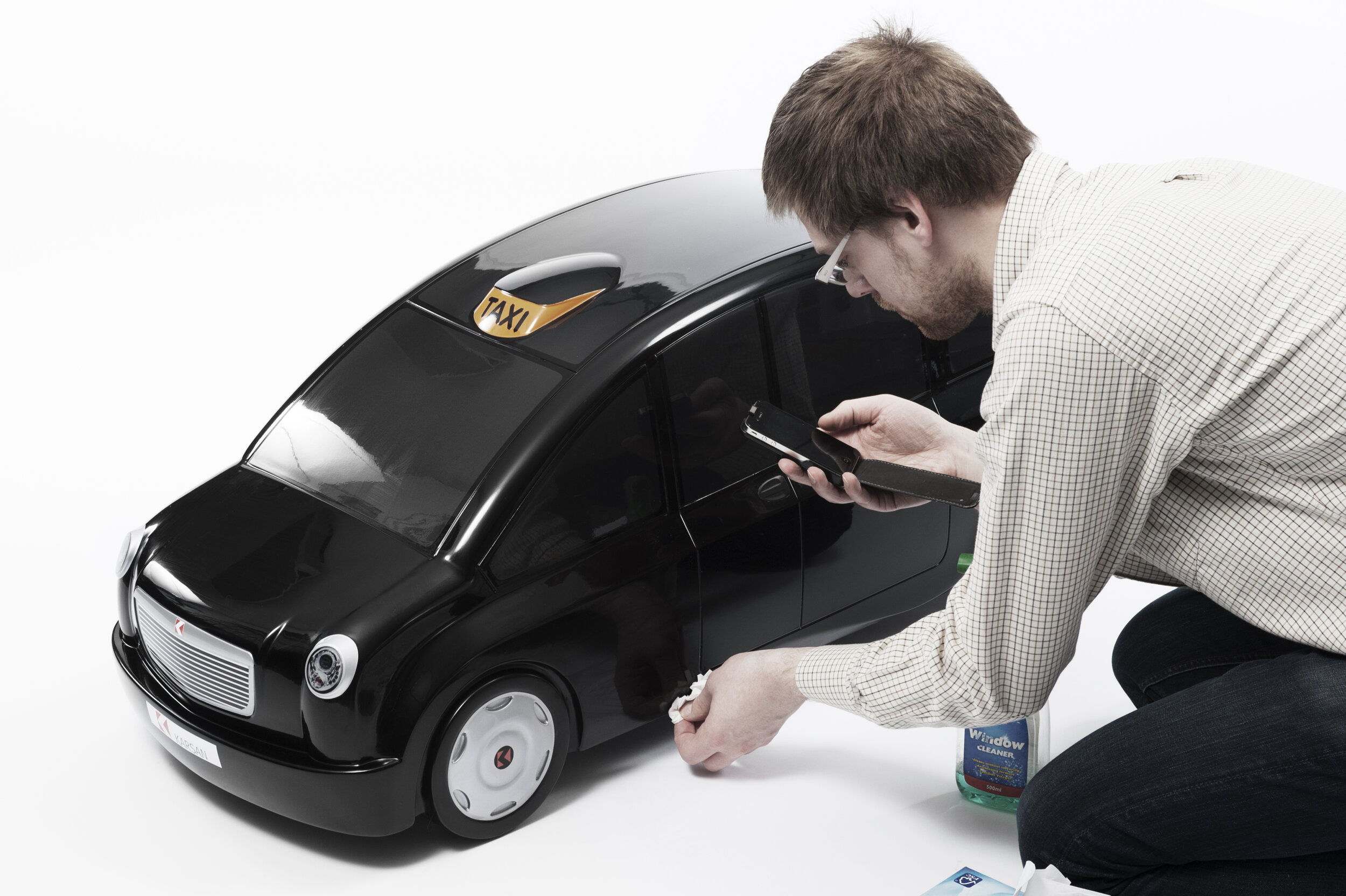


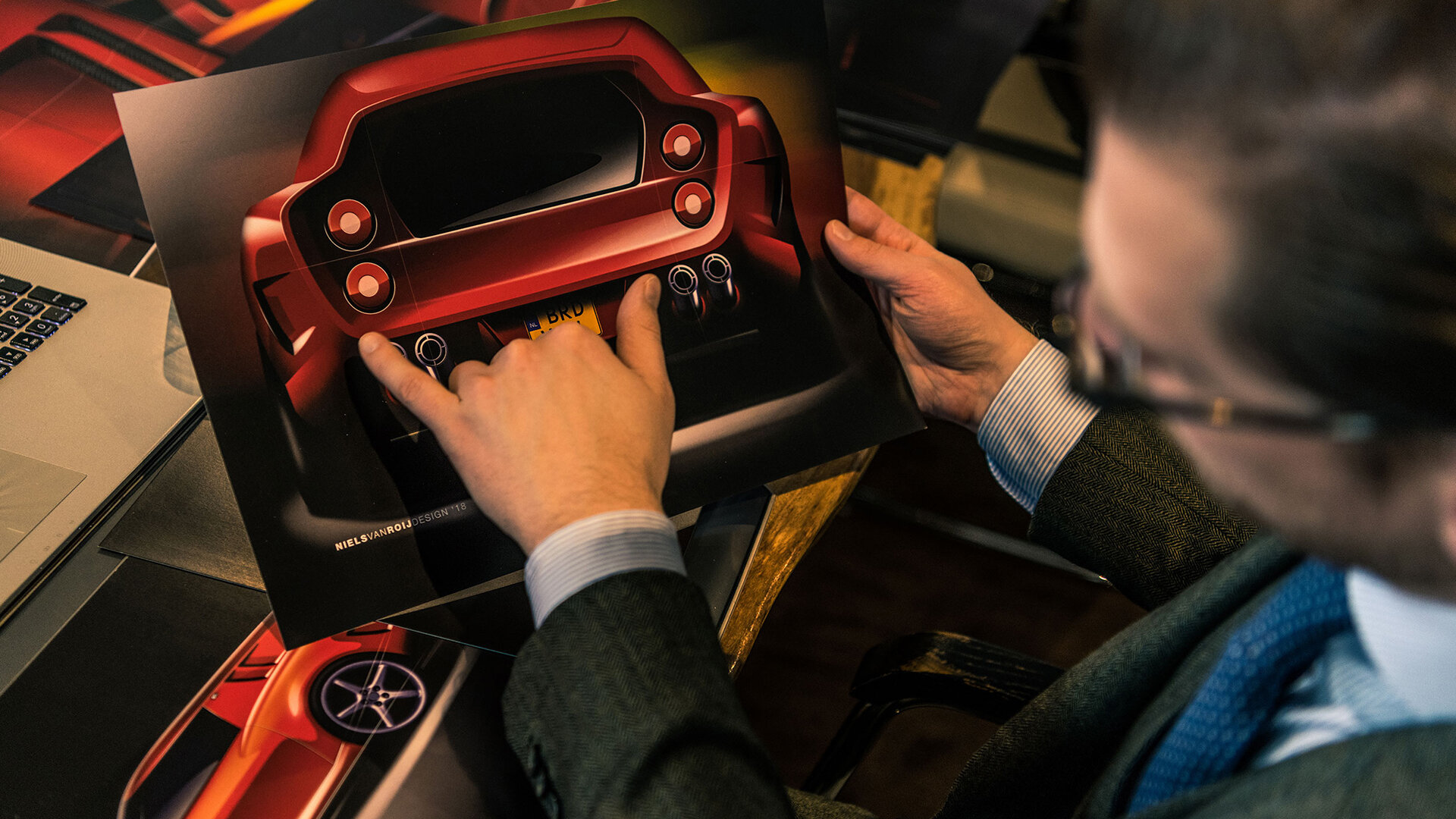

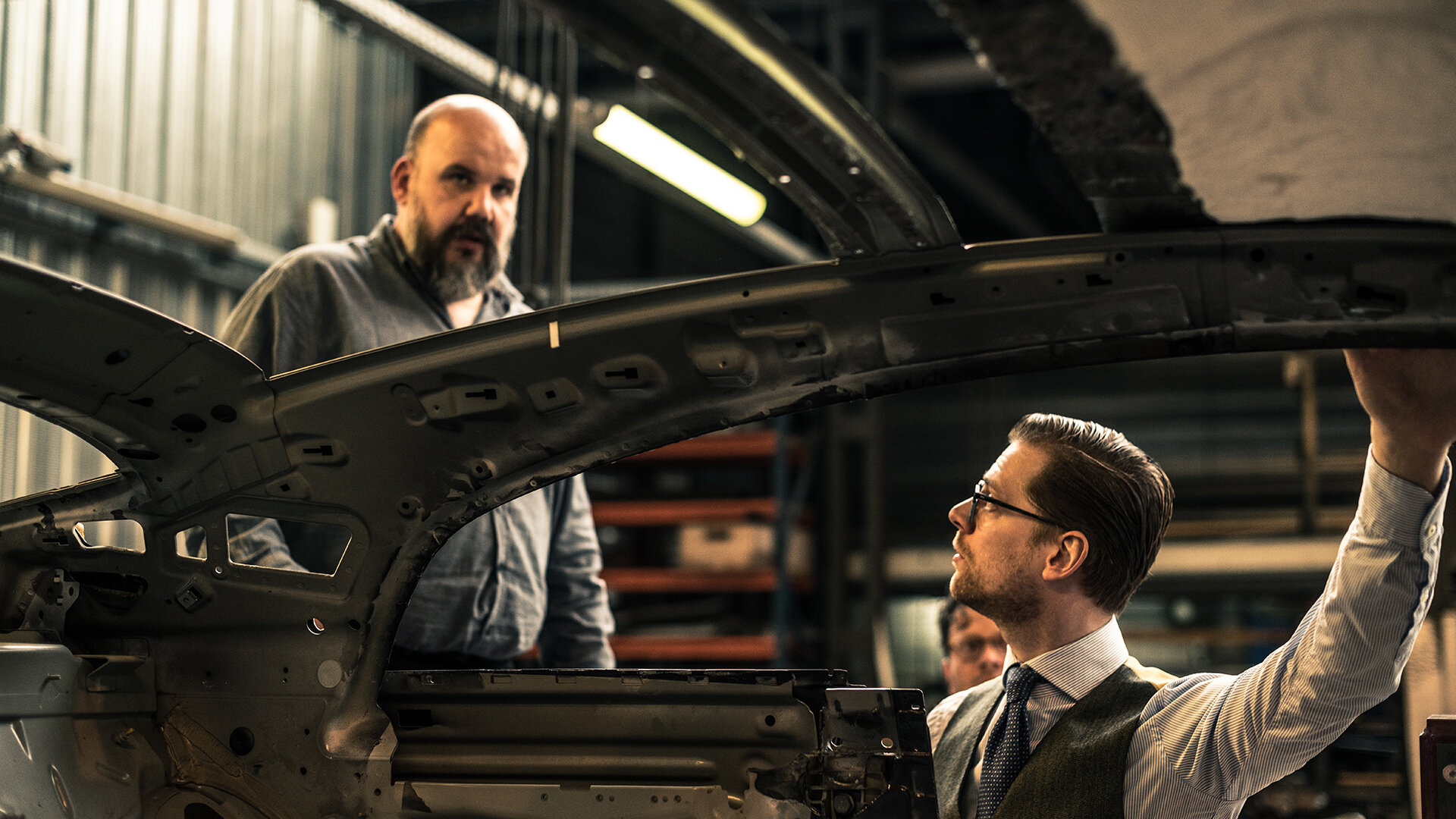
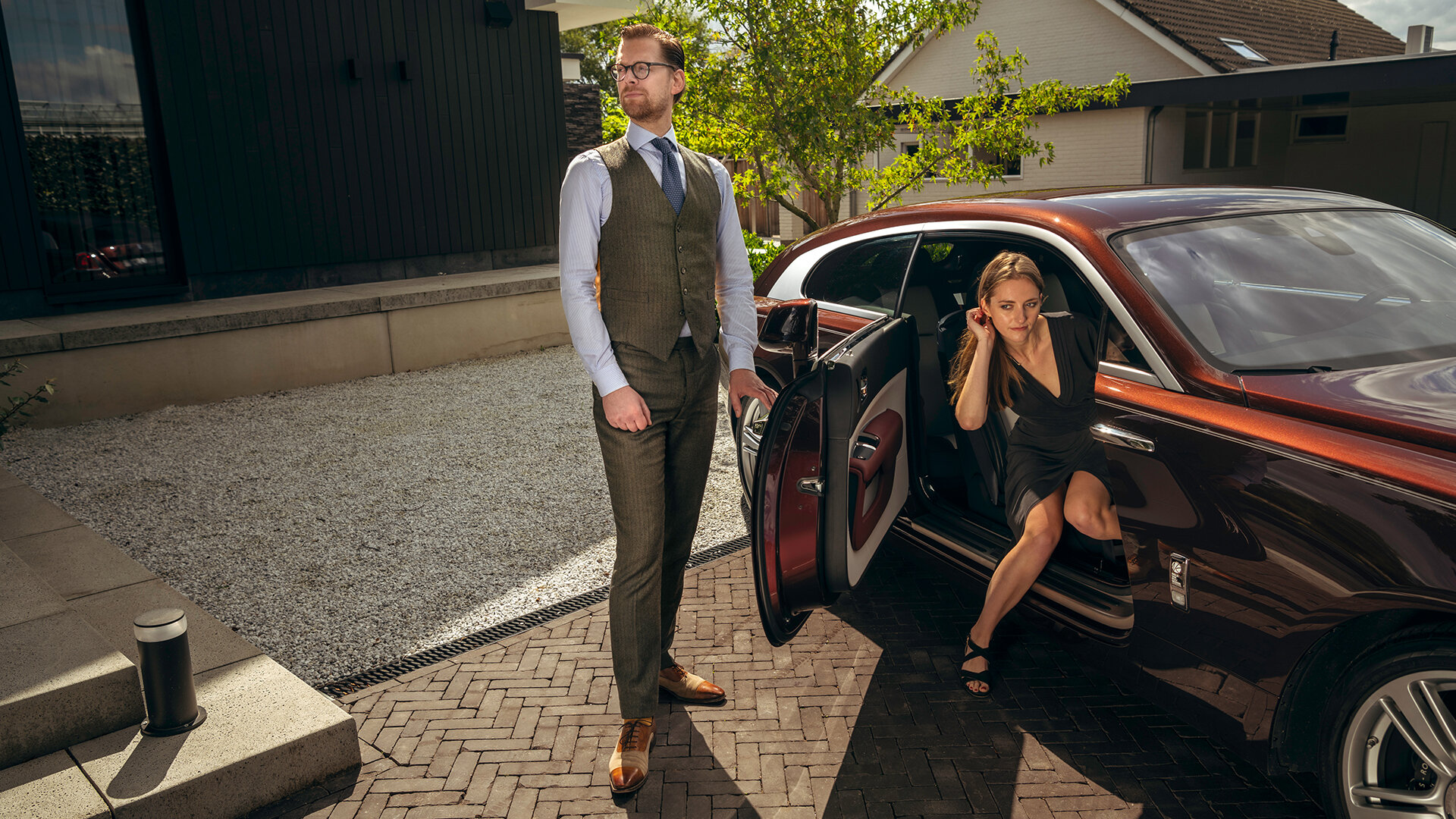






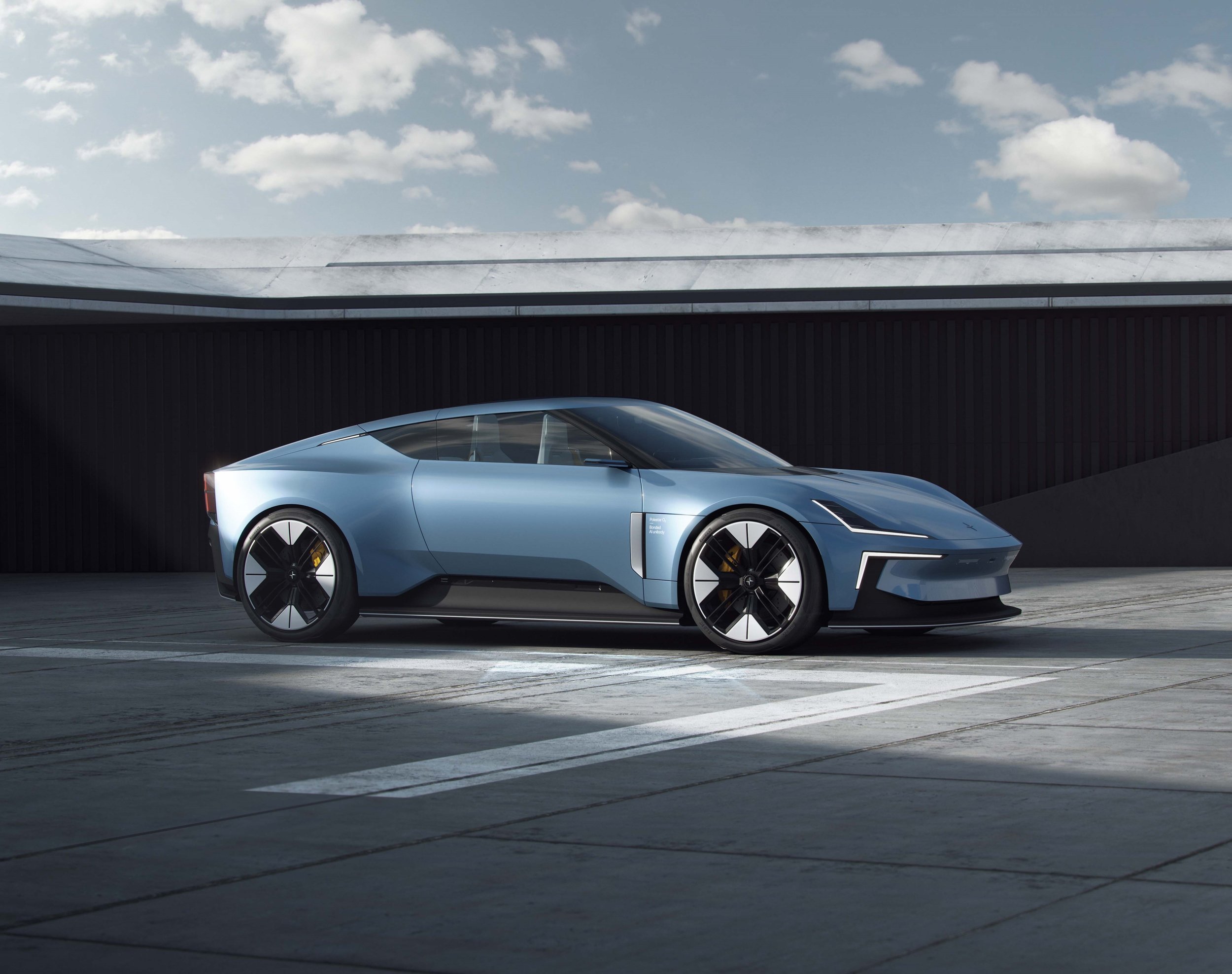



Car interior designer who created some of the most significant cabins of all time, most notably the Porsche 928’s